How to Clean a Dirty Pocketknife
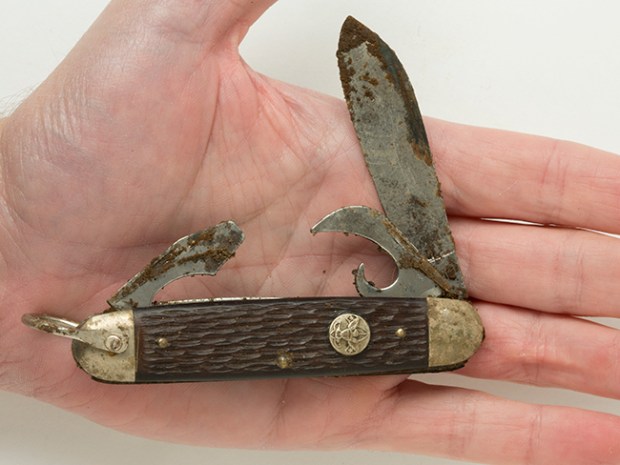
Q. Dear Gear Guy, I got a pocketknife from my grandfather, and it’s all dirty and rusty. Can you tell me how to clean it, please?
— Rusty Jared, Philadelphia, Pa.
A. Rusty, I love it when Scouts decide to repair old camping gear rather than just throwing it out. I checked in with my friends over at Gerber Legendary Blades to find out exactly how to best fix your knife.
Here’s what you’ll need:
- Thick rubber gloves
- Mild dish detergent
- Soft sponge (or a toothbrush)
- Soft cloths
- Nylon pad
- Household lubricant (WD-40)
- Household oil (3-in-1)
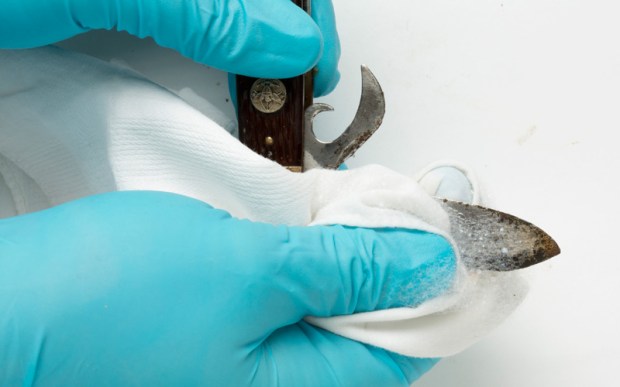
CLEAN IT: While wearing your rubber gloves, wet a soft cloth with warm water and wipe down both sides of the blade.
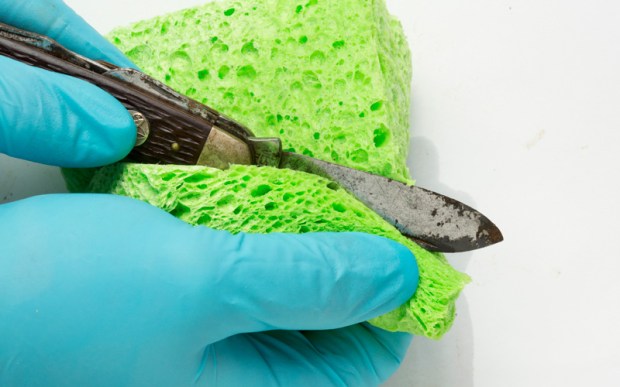
Next, scrub the blade with a soapy sponge. To clean serrated blades, use an old toothbrush rather than a sponge. If there’s junk stuck on the blade, pour dish detergent right on the spot and let it sit for a few minutes before scrubbing again. Rinse the blade with warm water and dry with a clean cloth.
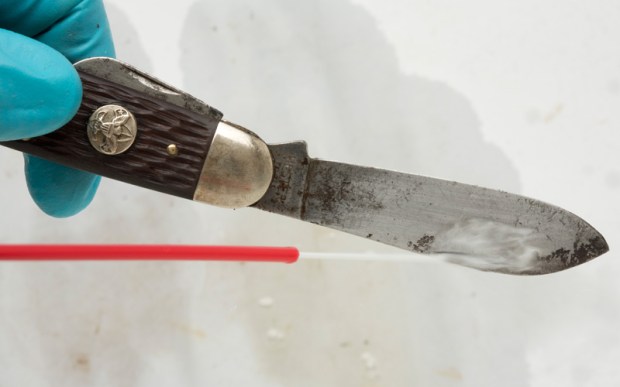
REMOVE THE RUST: Spray the blade with a lubricant like WD-40. Be sure to spray all the rusty areas and then let it sit for one minute.
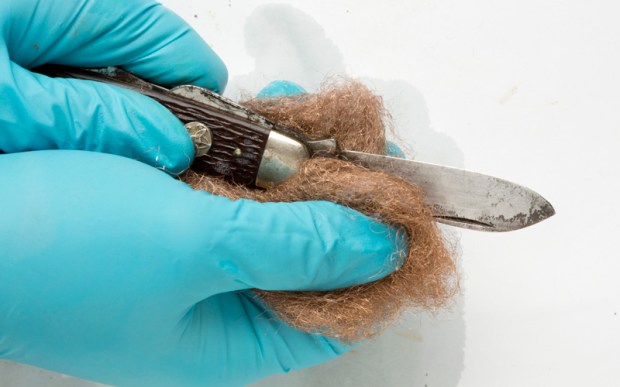
Now scrub the blade with a nylon pad. Rinse the blade. Repeat with the WD-40 for any stubborn rust spots, letting the lubricant soak in for about five minutes before scrubbing.
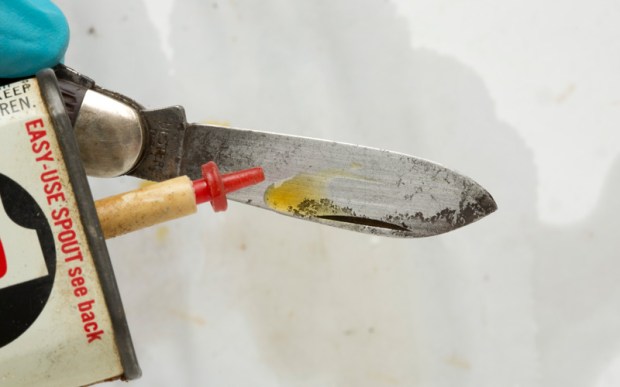
Once you’ve removed the rust, wash your blade with warm, soapy water. Finally, dry it off and add a few drops of household oil (3-in-1) to the blade.

I was told plane unflavored toothpaste works to clean it
I was wondering if it’s possible to clean it with things you might find around you? Like, say, the forest or desert. For instance, what if I was to find a pocket knife in a stream, and it looked disgusting. Is there anything I can do to clean it? If I don’t have the materials that you require, what now?
thanks
Cool
Hi I just got 2 new knives and this has been really helpful
A buffing wheel that has a small amount of polishing compound. When work has been completed the working surface can be washed in warm soapy water to remove any excess buffing compound or dirt which may have accumulated. Dry with a soft wool cloth or chamois. The high luster obtained from buffing can be protected from future oxidation by the proper application of a clear metal lacquer.
Probably a good penetrating oil where the blades pivot might be helpful also. Steel wool can be used as well. You might also try renaissance wax. It’s an excellent cleaner.
Do not use vegetable oil as it will oxidize and turn into a thick, viscous paste. Light machine oil like 3-in-One is the best or use nothing and just wash and dry it periodically. Powdered graphite used in locks can also be used on the hinges to make them easier to open and close, but be careful if it is not a lock-blade that it doesn’t close too easily.
If you have access to it kroil is better than wd-40.
It’s also expensive and I used to have to buy it by the gallon for the business, but it would remove all rust.
Wow!
hi
great!
Thank bro appreciate it, i got 2 old knives that i don’t want to throw away.
What about sanding it with aluminum foil to get the rust off?
Can you use vegetable oil?
No on the vegetable oil! Vegetable oil is organic so it breaks down and becomes rancid over time, which can further degrade the blade. Any petroleum or mineral based oil is best.
No; the vegetable oil will oxidize and turn into a thick paste.